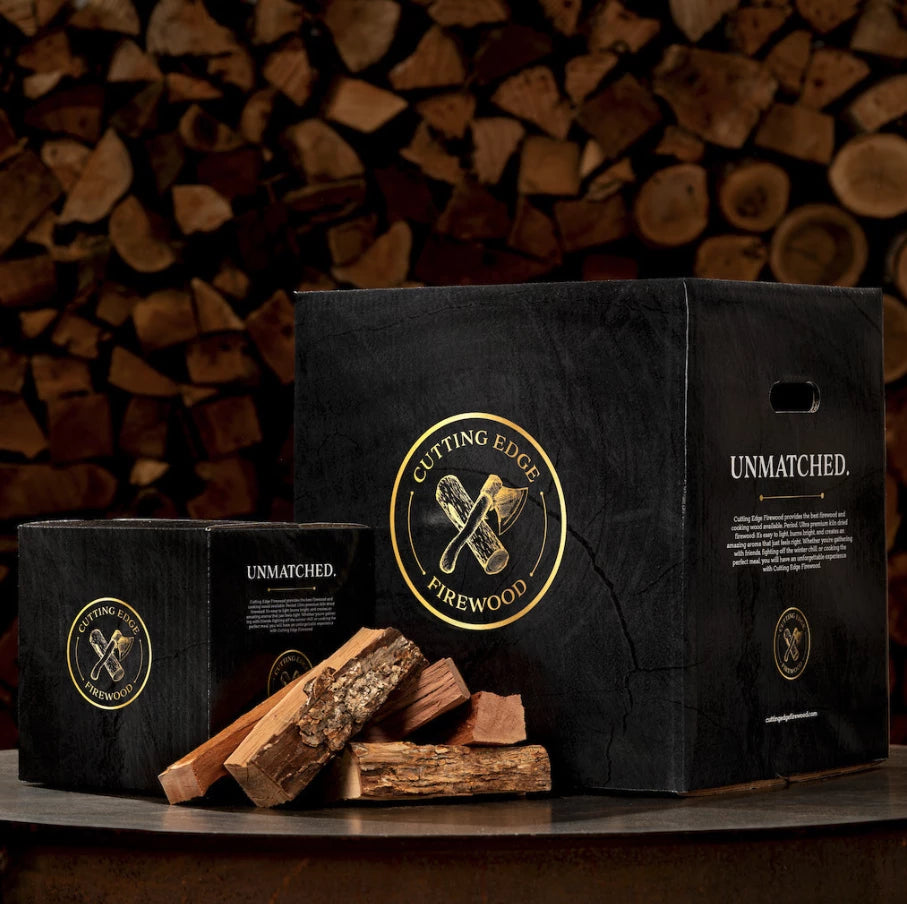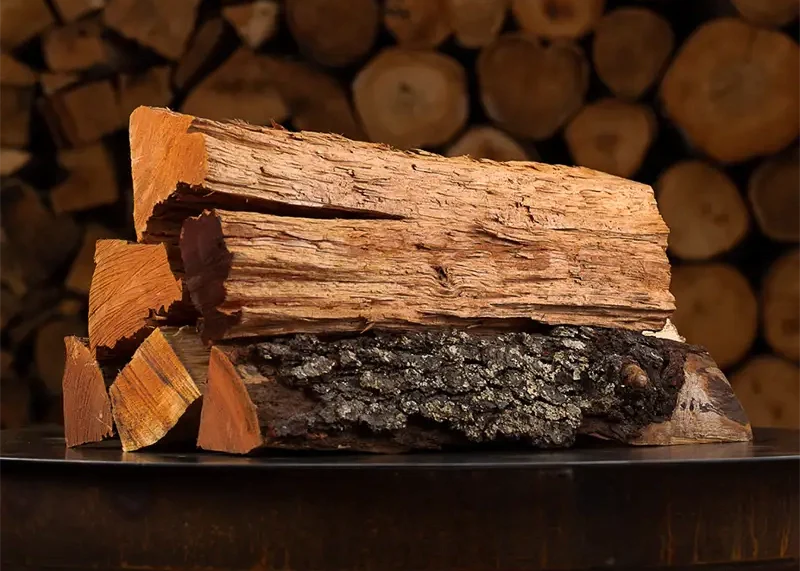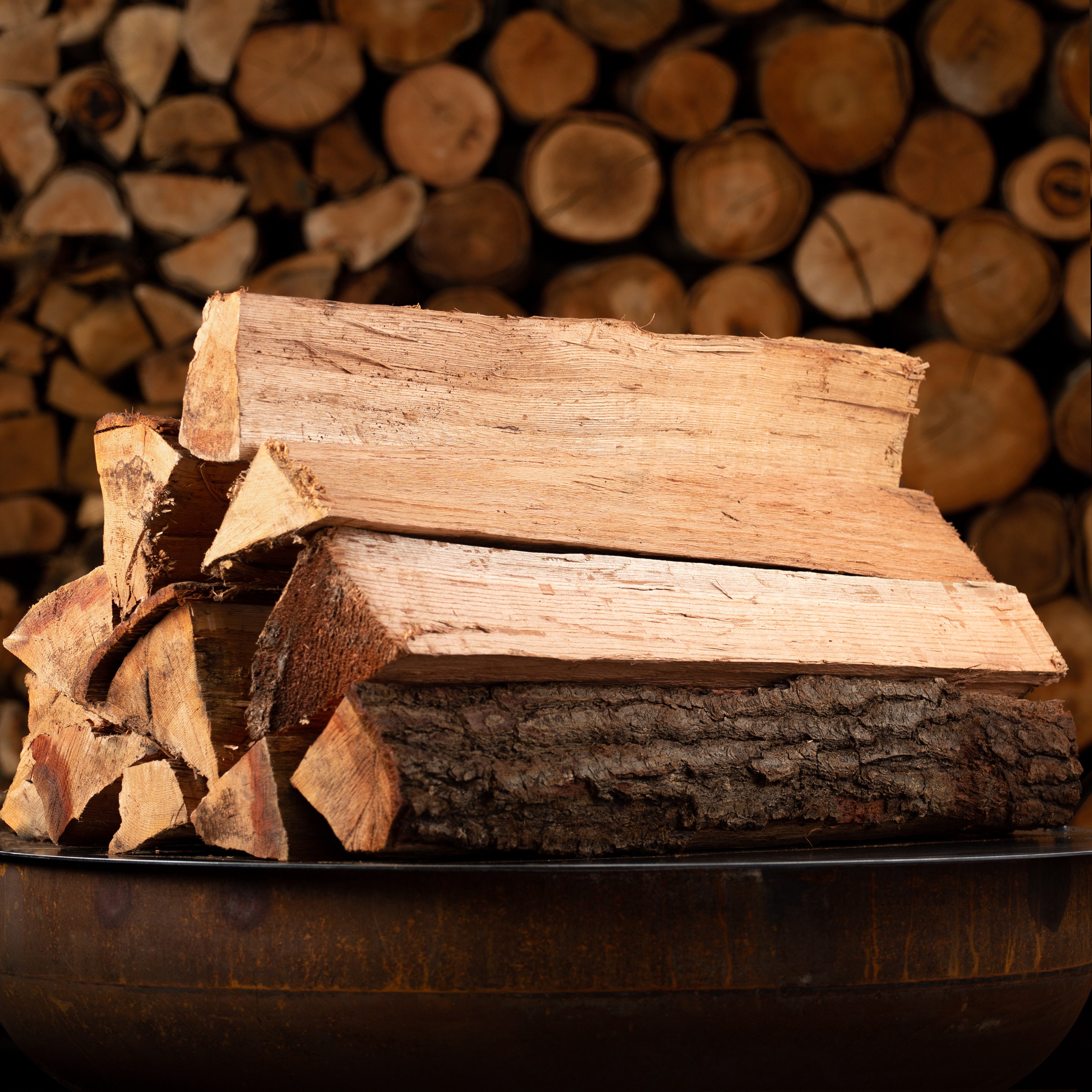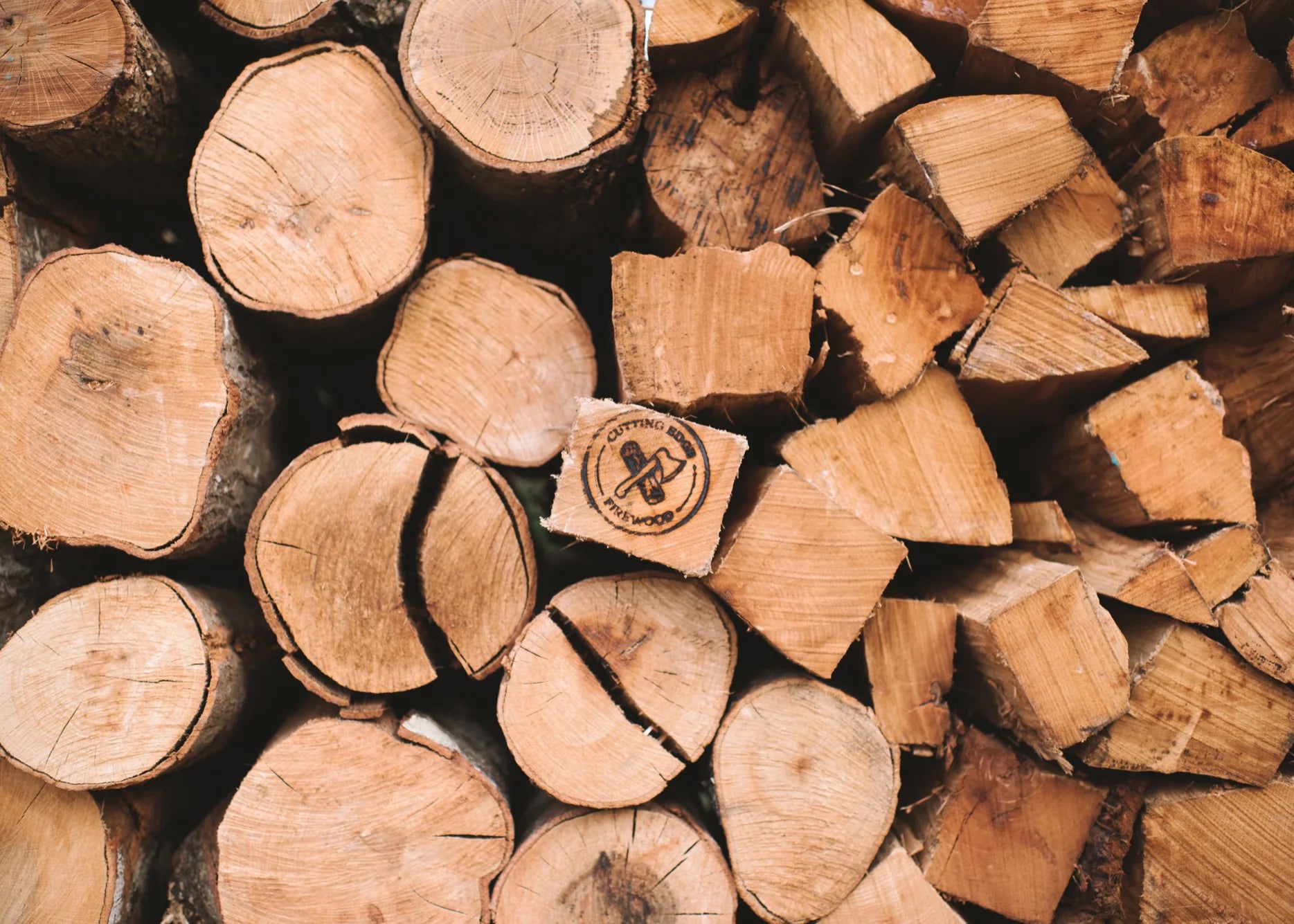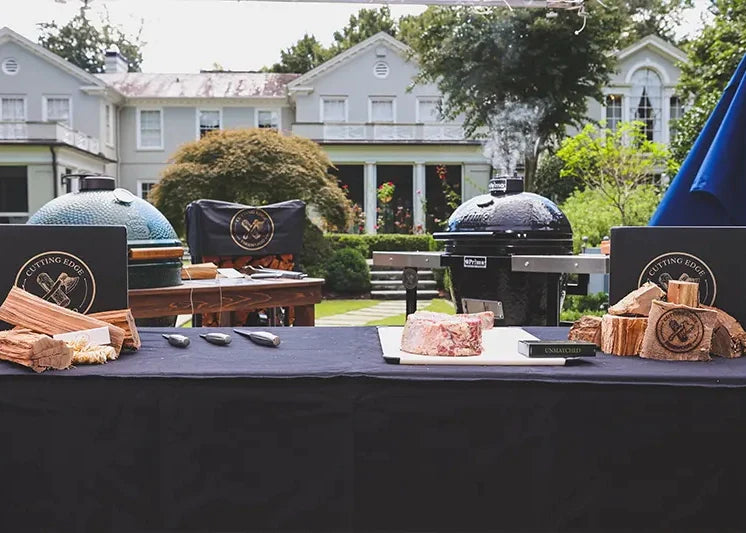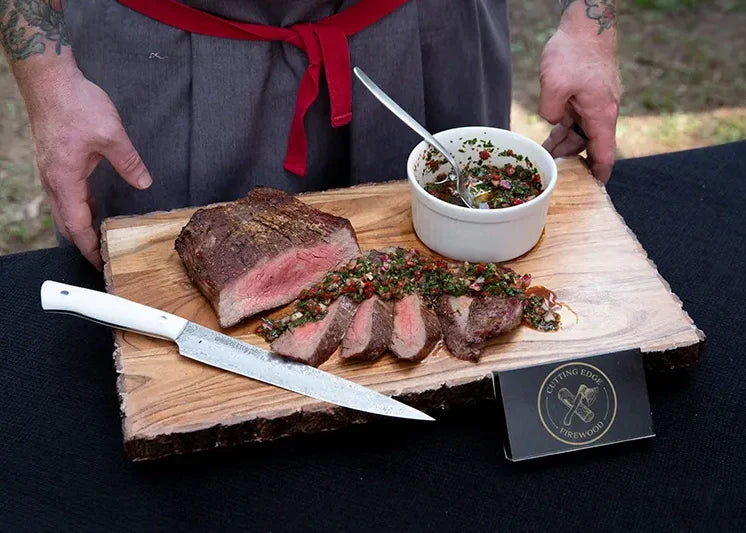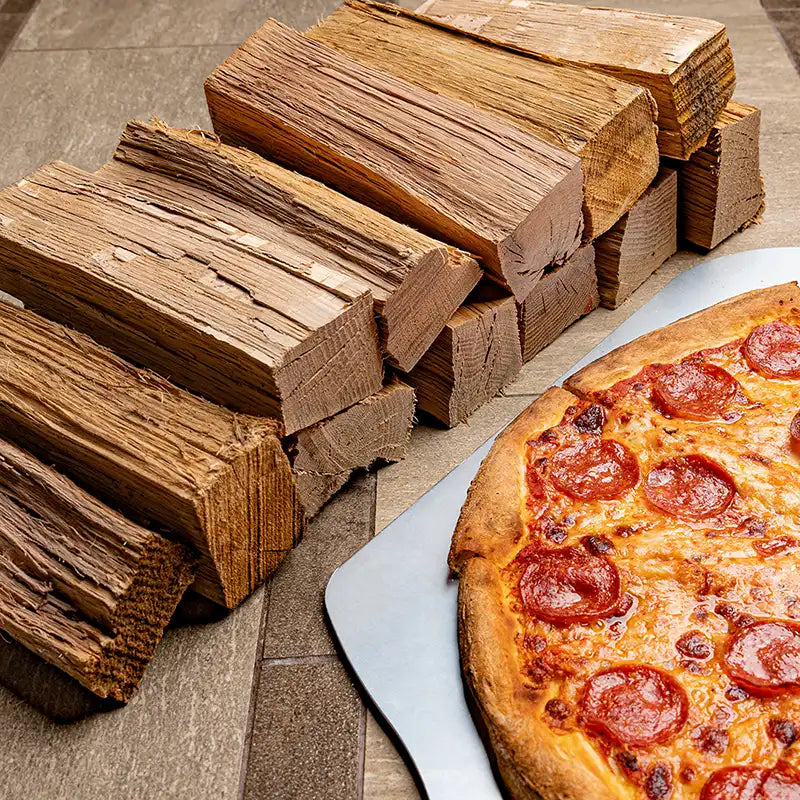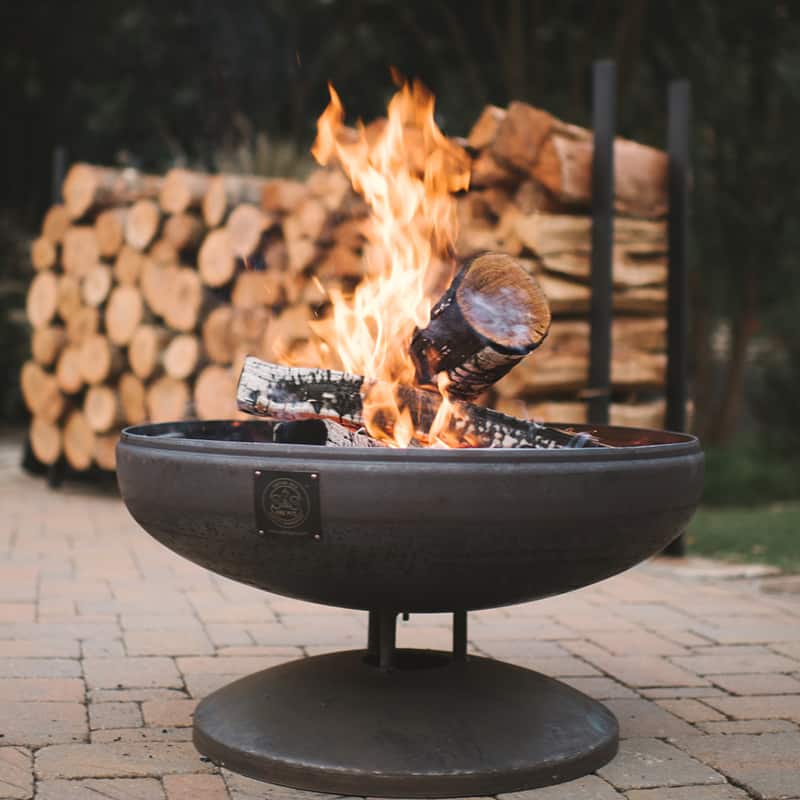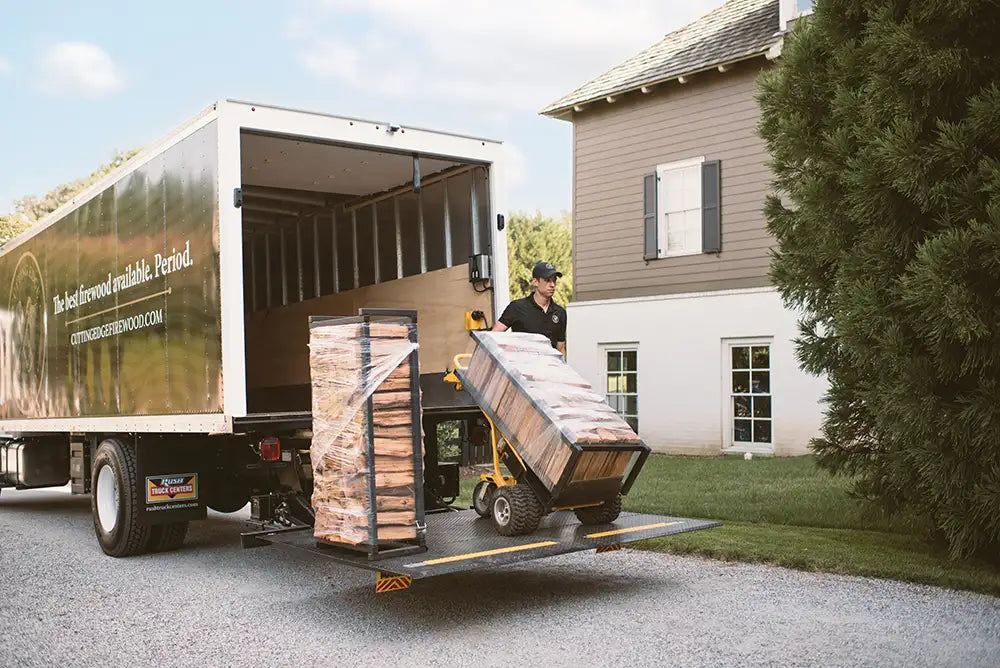In an earlier post, we talked about what the term “seasoned” firewood really means, as well as the many downsides of choosing seasoned firewood over kiln-dried options. Nevertheless, if you’re the do-it-yourselfer type, seasoning your own firewood can sound like a fun summertime project to complement your regular firepit get-togethers. In reality, seasoning your own firewood or choosing a non-store supplier of seasoned firewood can be a serious mistake. There are many possible pitfalls when it comes to seasoning your own firewood (or trusting a non-professional to do it), and the low-quality wood can end up completely ruining your summer firepit experience.
The Challenges of Seasoning Your Own Firewood
For freshly chopped wood, the total water content is about 50 percent. In order to be considered fully seasoned, the moisture content of firewood must be below 20 percent. If it’s anywhere in between, the wood is considered only partially seasoned, and it burns even more poorly than fully seasoned firewood (as we discussed in the earlier post). Getting firewood from 50 percent to 20 percent water content is a major challenge. Here are a few of the obstacles you can expect to face when you try to season your own firewood:
- Humidity. The average humidity level in the Atlanta area (year-round) is about 68 percent, placing it among the more humid major cities in the country. The moisture in the air can increase the time takes for wood to be seasoned, which inevitably increases the risk that you will think your wood is fully seasoned and ready for use when it is still only partially seasoned.
- Wet weather vs. storage concerns. Like humidity, wet weather can further slow down the seasoning process. When your wood gets rehydrated by an unexpected rainstorm, the seasoning time increases because of the time it takes for the wood to return to the level of dryness it had attained only a few hours before. At the same time, one of the most common mistakes made by people who try to season their wood is to keep it covered to protect it from the rain. If the wood is not exposed to the open air, the moisture gets locked in, thereby increasing the necessary drying time before it can be considered fully seasoned. That means you have to strike a careful balance between leaving your firewood out to dry and making sure it is covered before the rain comes--which can be very inconvenient, considering that you’ll be forced to keep it at the forefront of your mind throughout the months-long seasoning process.
- Breaking up the wood. The time it takes to season your own firewood--and the overall effectiveness of the process--depends on how well you break up the wood. As you might expect, it takes far longer for a whole log to go from green to fully seasoned than it does for log that has been broken up into small chunks. However, it can be challenging to balance your desire to speed up the drying process with your goal of ensuring that the wood chunks are the right size for your firepit when you decide to use them. If you don’t break the wood enough, you’ll probably end up with partially seasoned firewood. But if you break it up too much, it won’t burn well in your firepit. Either way, you won’t end up with the firewood you want.
- Mold and insect infestations. Mold and insect infestations are common during the seasoning process. No matter how hard you try to protect your wood from humidity, leaving it to sit for a year or more makes it a prime target for unwanted pests. That’s especially true in the early stages of the seasoning process, when the cells and sap make the wood inherently moist, but it can also become a problem when the wood is exposed to humidity or a sudden rainstorm.
Seasoned Firewood from Someone Else?
If you’re not up to the task of seasoning your own firewood, you might consider buying seasoned firewood from a non-professional in the area, like a friend down the road. He may assure you of his experience with seasoning firewood, but the process is finicky and uncertain, so there’s always a risk that you’ll still end up with partially seasoned firewood. seasoning firewood is likely to be just as challenging for him--even if he has done it before--so there’s a good chance you’ll still end up with partially seasoned firewood. Your friend may think the wood is fully seasoned, but it can often be difficult for non-professionals to tell--and you’ll end up with low-quality firewood.
The solutions is to bypass the seasoning process and choose high-quality kiln-dried firewood from Cutting Edge Firewood instead. When firewood is dried in a kiln, the process maximizes moisture removal, so there is no chance you’ll end up with wood that’s still partially green. With our firewood, you can enjoy your summer without having to worry about all of the pitfalls of the seasoning process, and you can make the most of every summer get-together around your firepit.
Cutting Edge Firewood offers kiln-dried oak and hickory firewood, as well as a variety of other products and services. Contact us today for more information!

